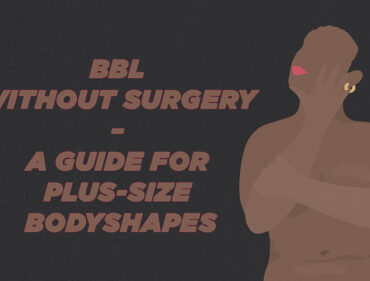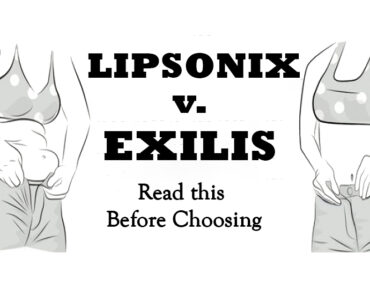Mastopexy- Understanding the Breast Lift Procedure
For ages, women have been worried about the look of their breasts, whether in clothes or out of clothes. However, it is a natural and very normal process of life that gravity will show up regarding the breast at some point in a woman’s life. It is often alarming for a lady to stand in front of a mirror and have to stare at a downward-facing breast. It is understandable if you desire a perky whole looking breast if this affects your confidence in your skin or self-image, especially with the fashion standards of our world today.
So, if your breasts sag or nipples point downward or what the medical experts like to call breast ptosis, you might be searching for answers on how to regain that perky-full looking breast and are probably considering several breast lifts or Mastopexy option. A breast lift can provide a self-image and confidence boost. That being said, a breast lift will not affect the size of your breasts appreciably. Let’s understand what mastopexy is.
Table of Contents
ToggleWhat Does Mastopexy Mean?
The medical term for a breast lift is mastopexy. The breast lift procedure involves a plastic surgeon lifting and reshaping your breasts to give them a firmer appearance and repositions your nipple higher on your thoracic wall to give your breast a rounder appearance. The procedure also eliminates excess skin around your breasts and shrinks the size of your areola, which is the darker area surrounding your nipple.
So, you are thinking about getting a breast lift procedure, but you are unsure if that is what you need? You might want to consider talking with your physician or plastic surgeon to get an expert opinion. Otherwise, a crude way to find out is a test with a pencil. This involves sticking a pencil beneath your breast and checking if it remains there. If it does, a breast lift may be a possibility. You may choose to go for this treatment if you are deeply troubled by the sight or feel of drooping, flat, or sagging breasts.
While all this sounds amazing, note that breast lift surgery does not significantly alter your breast size or round out the upper part of your breast. Consider combining breast lift and breast augmentation surgery if you desire bigger and more breast volume. Also, if smaller breasts are your goal, consider combining breast lift and breast reduction surgery.
Why Do Women Get Breast Lifts?
The desire to restore the former or lost glory of perky breasts is primarily why women seek out breast lifts. A breast lift can revitalize your shape by creating a more youthful and elevated breast profile. Over time, a woman’s breasts lose their young form and sturdiness. Your breasts alter as you age, losing their suppleness, flexibility and firmness. There are several reasons for these types of breast structural changes. It is entirely your choice to undergo mastopexy.
Are you troubled by your breasts’ sight feel, ptosis, or enlarged areolae? You may opt to undergo this operation if you are bothered by these issues. If your breasts have begun to sag or droop, you may benefit from this operation. If you are considering a breast lift, these conditions can influence your decision:
- You have sagging breasts – the breasts have lost form and volume or become flattered and more prolonged.
- When naked, your nipples sink below your breast ridges.
- You have down-pointing nipples and areolae.
- Your areolae are out of proportion with your breasts.
- Your one breast is lower than the other.
Breast lifts are not for everyone. If you want to become pregnant soon, you should defer to obtaining a breast lift. This is because, during pregnancy, your breasts will expand as is consistent with bodily pregnancy changes and negate the effects of the lift.
Factors That Cause Breast Ptosis
From this expert research,
“Ptosis can affect technique selection in both oncoplastic and reconstructive breast surgeries for breast cancer patients. Breast ptosis can be a consequence of parenchymal maldistribution as well as connective tissue and skin dysfunction. Ageing, weight change, pregnancy, menopause, and lactation are among the events in a woman’s life that can affect the breasts through alterations in hormonal and structural components of the female body and physiology”.
In simple terms, the breasts of a woman vary naturally with time. A variety of reasons can cause drooping and flat breasts. Though not thoroughly researched, many of these issues are inevitable in the lives of many women. A breast lift operation can assist in restoring or preserving one’s youthful appearance. As stated earlier, Breast lift surgery can also be combined with breast augmentation or reduction procedures to enhance the form of the breast with your surgeon’s advice to your satisfaction.
The alterations and decrease of skin elasticity can occur as a result of:
- Pregnancy: The ligaments that support your breasts may expand during pregnancy as your breasts get thicker and fuller. Whether or not you breastfeed your baby, this stretching could contribute to sagging breasts after pregnancy.
- Variations in weight: Weight changes can cause your breast skin to stretch and lose suppleness.
- Gravity: Gravity causes the ligaments in the breasts to stretch and sag over time.
- Ageing.
- Menopause
- Genetic predispositions
Risks plus Complications of Mastopexy or Breast Lift.
The choice to have plastic surgery is incredibly personal, and you must consider if the advantages outweigh the dangers and potential problems of breast lift surgery. A breast lift has several downsides, including:
- Bruising: While scars are permanent, they will soften and diminish between one to two years. Bras and swimming suits may generally conceal scars after a breast lift. Scars have been noted to develop thick and broad due to inadequate healing in rare cases.
- Alterations in nipple or breast feeling: While sensation usually recovers within a few weeks, some loss of sensation may be permanent. The erotic feeling is typically unaffected.
- Asymmetry or irregularities in the form and size of the breasts: This might happen due to changes that occur throughout the healing process. Furthermore, surgery may not be able to address pre-existing asymmetry.
- Nipple or areolae loss, either partial or complete: Occasionally, the blood supply to the nipple or areola is cut off during a breast lift. This can cause damage to the breast tissue in the area, resulting in the partial or total loss of the nipple or areola. Breast-feeding can become difficult. If done correctly, breastfeeding is possible following a breast lift, while some women may struggle to produce enough milk.
- Problems with healing: The wound’s borders might separate, especially around the scar’s ends. Usually, treating the wounds will solve the problem, but you may require extra surgery to remove the unhealed tissue. Smokers are more prone to experience these healing issues.
- Extrusion: Deep sutures protrude through the skin at this point. These are readily removed.
- More profound structural damage: Although it is uncommon, the procedure has the potential to harm deeper tissues such as nerves, blood vessels, muscles, and the lungs. This harm might be either transient or permanent.
- Change due to age: Your breasts’ appearance will alter due to ageing, pregnancy, or other factors unrelated to your operation, such as gaining or losing weight. To preserve the outcomes of the breast uplift, you may require further surgery or other procedures.
- Reaction to allergens Allergic responses to tape, stitches, or solutions have been identified. If you experience an allergic response, you may require further treatment.
- Unsatisfying outcomes: Patients are sometimes dissatisfied with the result of their breast uplift.
- Anaesthesia dangers.
- Hematoma development or bleeding.
- Asymmetry of the breasts.
- Inconsistencies in breast contour and outline.
- Temporary or permanent changes in nipple or breast feeling.
- Deep vein blockage, heart and lung complications.
- Deep in the skin fat necrosis.
- Buildup of fluid.
- Infection/Sepsis.
- Incisions heal poorly.
- Nipple and areola loss might be partial or complete.
It is best to discuss these dangers thoroughly before giving your consent. Again, it is critical that you immediately discuss all of your concerns with your plastic surgeon.
Who is the Best Candidate for Mastopexy or Breast Lift?
To determine your candidacy for this surgery, it is required that the plastic surgeon be thorough in his preliminary investigations to ascertain and reduce the patient’s exposure to the risks and complications that come with the surgery. According to this medical research,
“Patient evaluation includes assessment of goals, degree of ptosis, tissue volume, skin quality, and breast position on the chest wall. There are critical technical details for each of the three incision options, the various methods of parenchymal manipulation, and implant placement. The potential for complications is greatest for combined augmentation and mastopexy.”
Explicit knowledge of the patient’s medical history and medical state is compulsory before surgery like this is done. Hence, though you might desire to have the procedure done, the decision for health reasons might not be up to you except if you choose to sign the “waiver forms” just in case. But to give you an idea of some criteria to look out for before you approach your doctor for this surgery, here are a few things to cross out on your suitability list. You may be a candidate for breast lift surgery if you meet the following criteria:
- You are physically fit and have maintained a steady weight for some time.
- Again, smoking is a no-no.
- You are not pleased with your breasts’ sagginess or loss of form or volume.
- You have flat, elongated or pendulous.
- You are worried your nipples sink below the breast fold if you are not wearing a form of bra.
- You have downward-pointing areolas.
- Your skin is stretched, and your areolas are swollen.
- One of the breasts is hanging lower than the other.
Conclusion,
Phhewww!! This all feels intense, right? But you now have enough information to walk into your surgeon’s office with the right questions. Understandably, you might need more time to weigh your options while seeking a professional opinion. Making this decision is deeply personal and might take a toll on you due to its downtime. However, no one says you can’t still look great in clothes even as you make your decision for or against getting the breast lift.
All you need is the right bra, albeit temporarily and in clothes, to give you the desired lift. And we stock all kinds of bras for all types of occasions; you know we are your plug for bringing out the sexy, confident woman in you.




